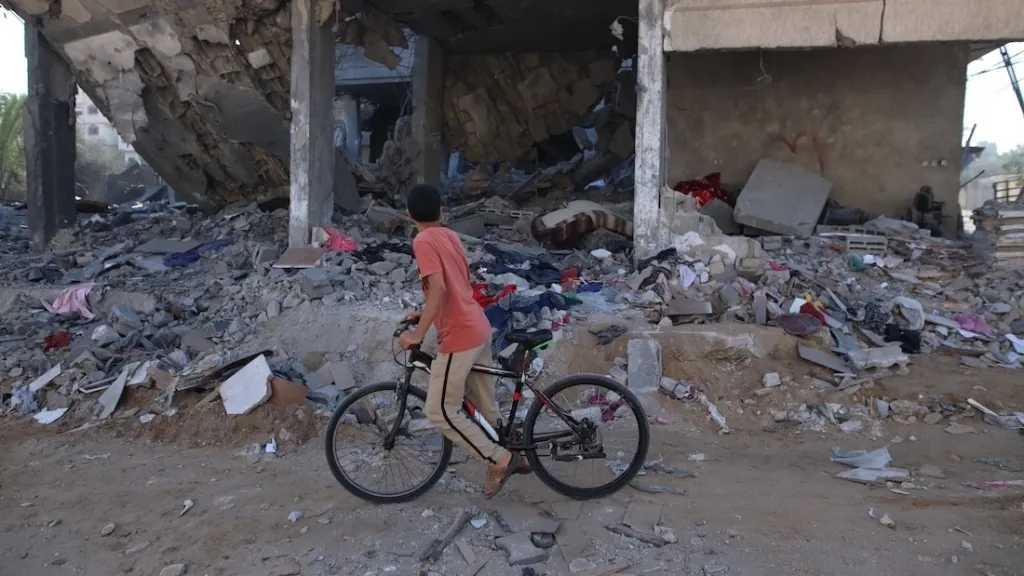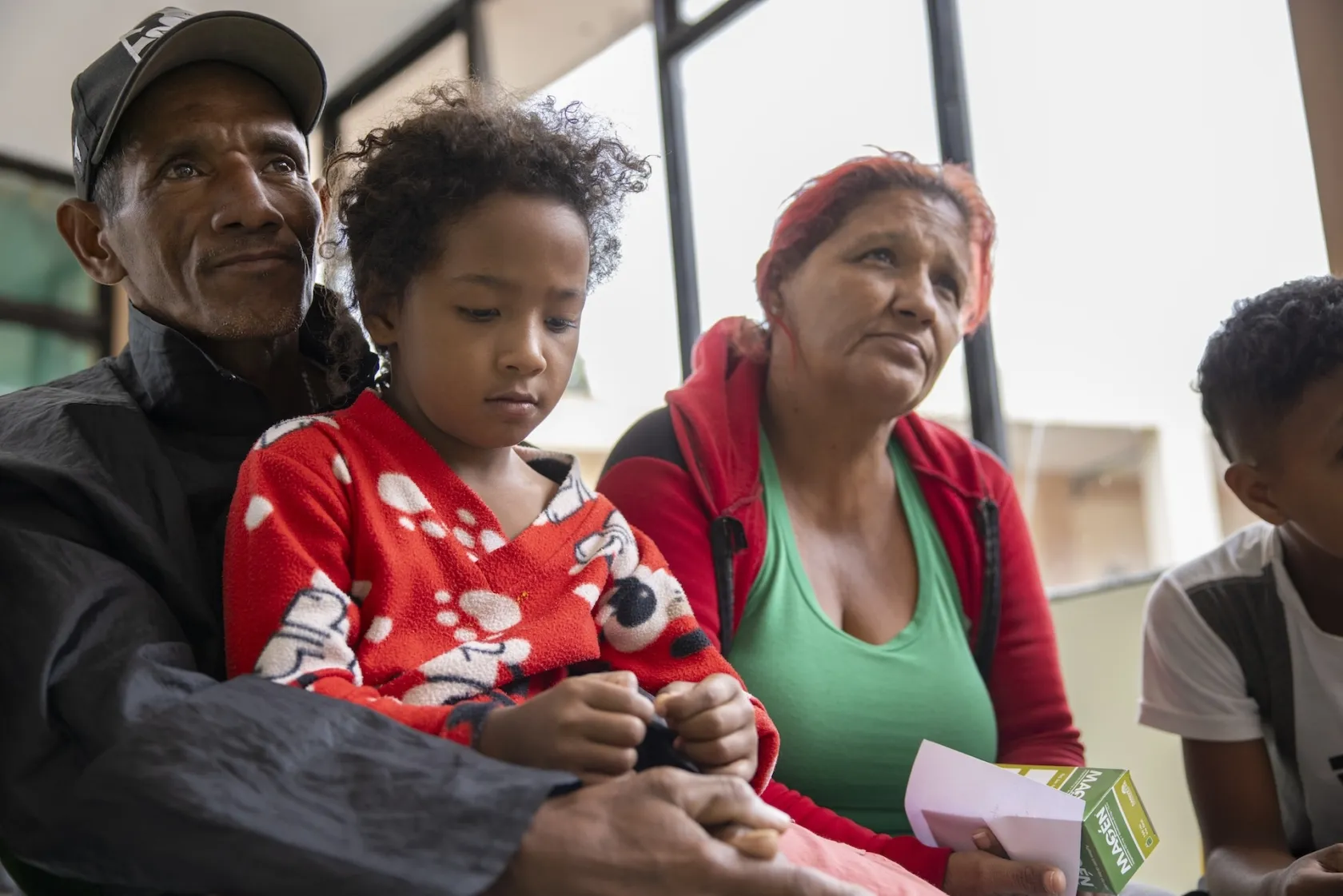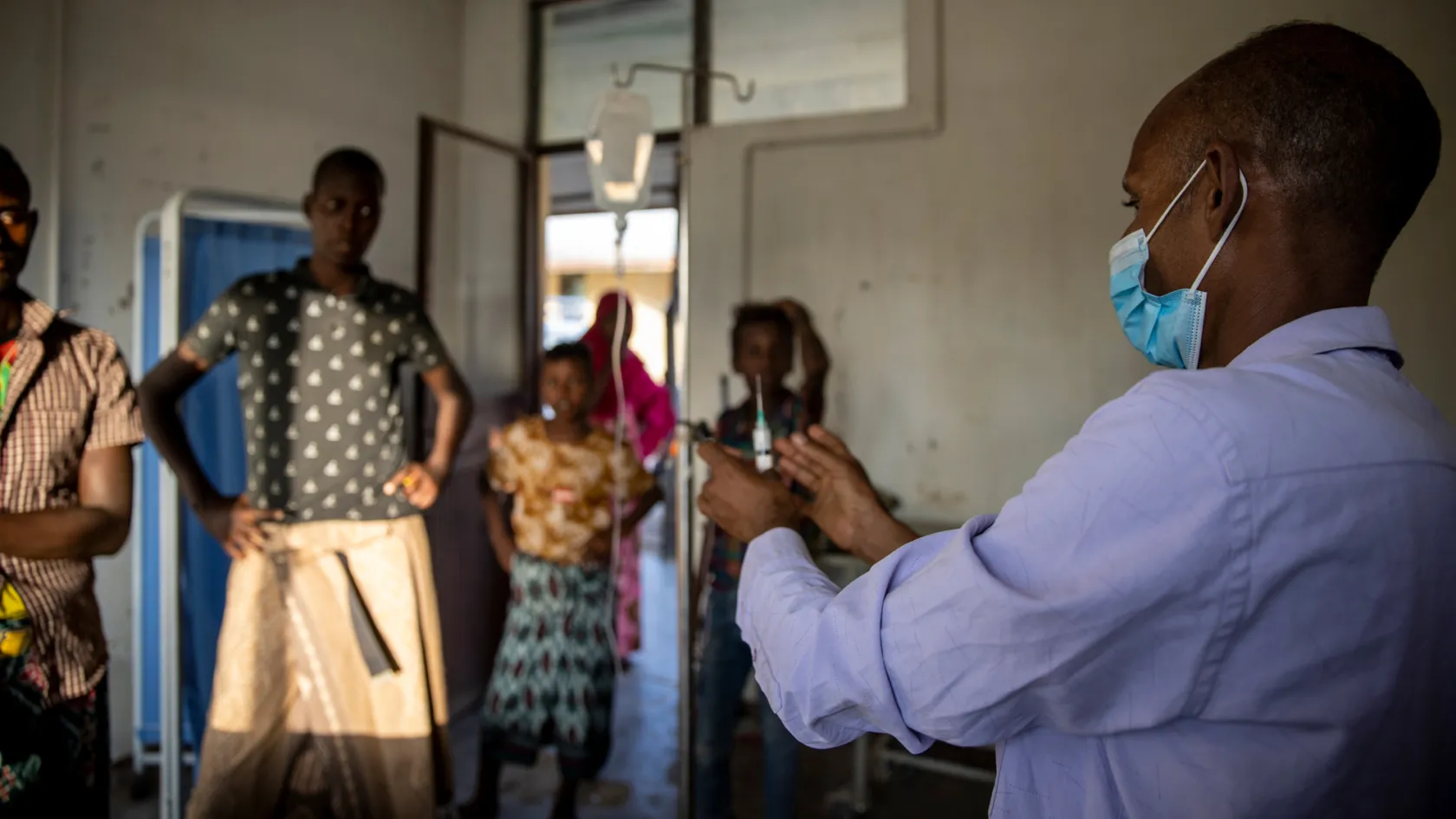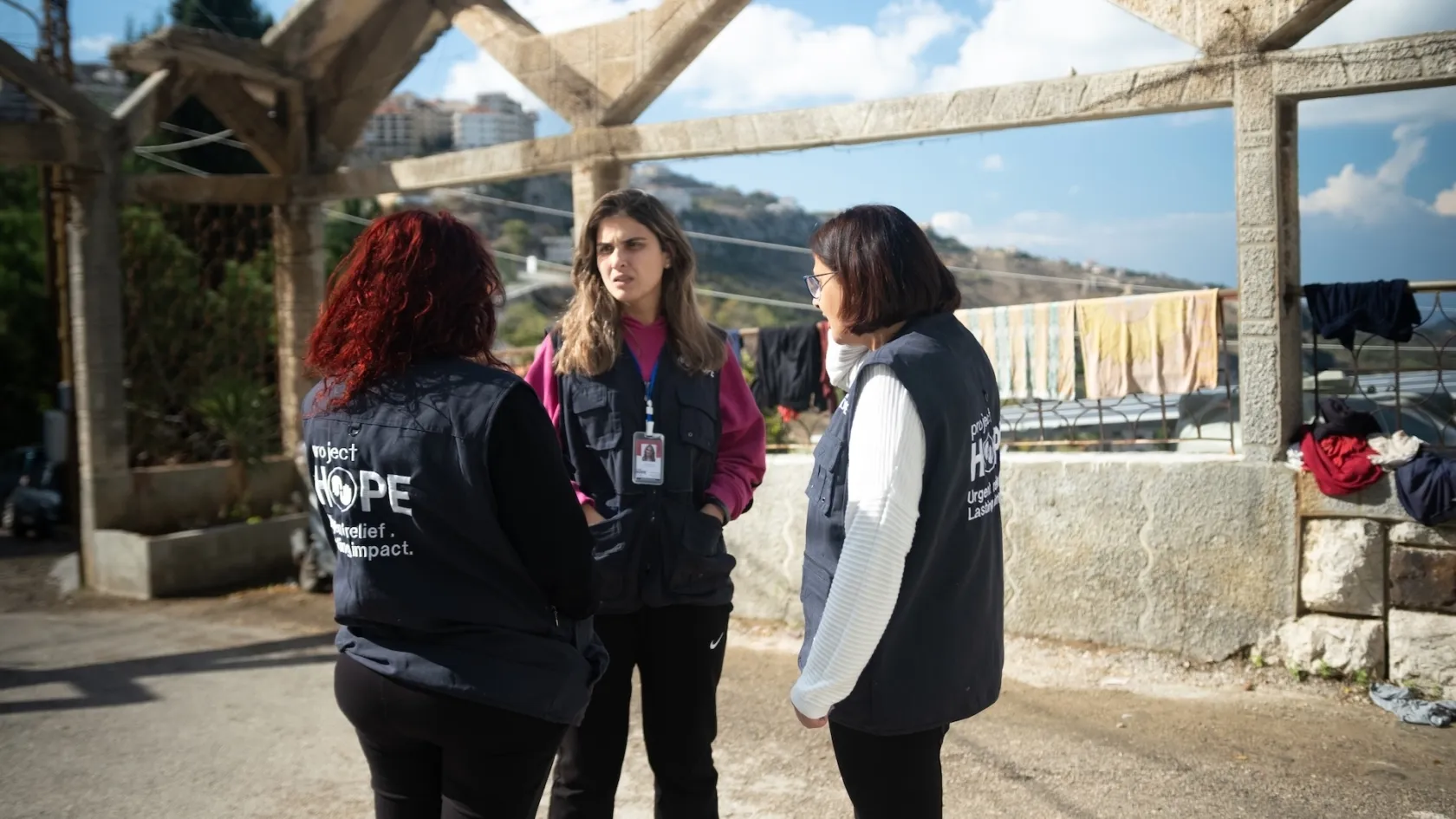The Global Displacement Crisis: 10 Numbers to Note
Every year, millions of people are forced to flee their homes due to conflict and disaster. Here are 10 numbers that tell the story of the displacement crisis and its far-reaching implications for health.

More than 122.6 million people are forcibly displaced around the world — a record 1 in 67 people.
Ongoing conflicts in countries like Syria, Ukraine, Ethiopia, and Sudan have driven millions from their homes, while natural disasters such as floods, hurricanes, and droughts have displaced entire communities, particularly in Asia, Africa, and the Americas.
Many individuals who have been forcibly displaced find themselves living in protracted situations — enduring years of uncertainty and instability. They are also more likely to experience worse health outcomes and are at higher risk of mental health challenges.
Here are 10 numbers that help to explain the magnitude and consequences of the global displacement crisis.
58%
The percentage of forcibly displaced people who never cross a border.
The majority of people who are displaced remain within their home country. The number of internally displaced people (IDPs) has increased in the last five years and now stands at 72.1 million. Countries with the highest number of IDPs include Sudan (nearly 9 million), Syria (approximately 7.4 million), the Democratic Republic of the Congo (approximately 6.7 million), and Colombia (nearly 7 million).
20
The average number of years a refugee is displaced.
Most forcibly displaced people live in increasingly protracted situations. On average, refugees are displaced for around 20 years, while most IDPs are displaced for over a decade. In the first six months of 2024, 2.2 million displaced people returned to their areas or countries of origin. This includes 1.8 million IDPs and 433,600 refugees.
10
The number of times Safa and her children have been displaced in Gaza.
Safa and her children live in a tent outside Khan Younis — the most recent place the family has sought safety after being displaced 10 times by the war in Gaza.
“It has been an excruciating journey for us,” she said. “Our first displacement was the hardest. Afterwards, it was a repetitive suffering, being displaced so many times in one year, searching for safe areas that would become threatened.”
One morning, Safa was preparing breakfast on the ground since she does not have a kitchen or a table in her tent, when her 2-year-old son, Moneeb, started screaming — he had spilled boiling tea on his leg. An infection started to spread. Soon, he couldn’t walk.
Safa took him to Dr. Karam Madi, Project HOPE’s doctor, who provided medical treatment and dressings at a clinic we operate in Khan Younis. Project HOPE followed up with Safa and Moneeb daily until he was fully healed and able to be discharged.
“His situation was very bad. I was worried about him,” Safa said. “Now I can say he is recovering amazingly, he is now healthy, and even his scars will gradually disappear when he grows.
“I hope he grows up in better conditions in a world with no war.”

2/3
The portion of the globally displaced population that comes from just 10 countries.
Two-thirds of forcibly displaced people come from just 10 countries: Afghanistan, Colombia, the Democratic Republic of the Congo, the Occupied Palestinian Territories, Somalia, Sudan, Syria, Ukraine, Venezuela, and Yemen. These regions are at the center of some of the most complex and long-standing conflicts, crises, and humanitarian emergencies in the world.
40%
The percentage of forcibly displaced people who are under 18.
At the end of 2023, 47 million children were forcibly displaced worldwide — approximately 40% of all people globally displaced. Over 2 million children were born as refugees between 2018 and 2023. The number of children displaced by conflict and violence has more than doubled since 2010 and is expected to continue to increase in 2025.
3/4
The portion of the globally displaced population that lives in countries that are highly vulnerable to climate change.
Climate change is a major driver of displacement, displacing millions of people worldwide every year. Climate-related disasters such as floods, storms, wildfires, and droughts triggered more than half of new displacements in 2023. In 2024, floods and droughts alone drove 40 million people from their homes.
22
The number of days Jesús and Marta spent walking with their children to reach Ecuador.
For Jesús* and Marta*, leaving home in Venezuela wasn’t a choice. “People are hungry,” Marta said. “That is why we took our family.”
Together, they led their family of 11 on a journey of more than a thousand miles to Ecuador in hopes of finding safety, stability, and the chance to survive. They walked long distances and slept outside gas stations and in parks, relying on free food from strangers along the way. One of their children came down with the flu on the journey, and all were dehydrated by the time they reached Project HOPE’s clinic in Ecuador.
In a shelter near the Colombia border, Jesús, Marta, and their kids received care and medication from Project HOPE’s local medical team of doctors, nurses, and a psychologist. It was the first time any of them had seen a doctor in months.
“It’s been great to get medicine for everyone,” Marta said. “It has been a long time.”

71%
The percentage of the global displaced population that lives in low- and middle-income countries.
Most displaced individuals live in low- and middle-income countries deeply affected by conflict, persecution, and natural disasters.
Nearly 70% of refugees live in countries neighboring their countries of origin. Iran, Türkiye, and Colombia are the top three host countries. Iran hosts over 3.7 million refugees (primarily from Afghanistan), Türkiye hosts over 3.1 million Syrian refugees, and Colombia hosts around 2.9 million refugees and other people in need of international protection (primarily from Venezuela).
22%
The percentage of displaced individuals in conflict-affected areas that will experience depression, anxiety, post-traumatic stress disorder (PTSD), bipolar disorder, or schizophrenia.
Displaced people are at significantly higher risk of developing mental health disorders. This is due to multiple stressors and challenges: exposure to trauma and violence; major losses of loved ones, community, livelihood, and home; and prolonged periods of instability and uncertainty. PTSD, depression, and anxiety are the most common mental health issues experienced among people who are displaced.
In Ukraine, 25% of IDPs suffered from depression, compared to 14% of the general population. Displaced women, children, and youth are particularly vulnerable to mental health challenges. One study in Colombia found that displaced teenagers were more than twice as likely to experience anxiety and depression than non-displaced teenagers. They were also four-and-a-half times more likely to have attempted suicide and six times more likely to have developed PTSD.
Though the impact of displacement on mental health is severe, most displaced individuals do not have access to mental health services. In a study of 21 high-, middle-, and low-income countries, only 28% of displaced people with an anxiety disorder received any treatment and only 10% received adequate care.

15%
The percentage of displaced individuals impacted by acute malnutrition.
Rates of malnutrition among displaced populations often exceed the World Health Organization emergency threshold of 15%, as people who are displaced often face food shortages and struggle to access basic resources.
Displaced people are at heightened health risk due to poor and unsanitary living conditions, increased exposure to disease, and limited access to health services. The impacts are profound and include higher rates of malnutrition, higher risk of maternal mortality, higher risk of infectious disease outbreaks, worsened mental health outcomes, and increased mortality among those living with chronic diseases.
Project HOPE works closely with health workers and local partners to deliver timely health and humanitarian assistance and meet the needs of refugees, migrants, and IDPs worldwide. To learn more about our humanitarian relief programs, click here.



